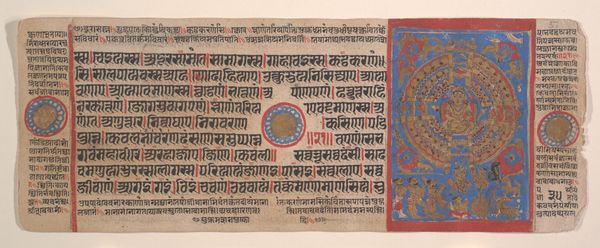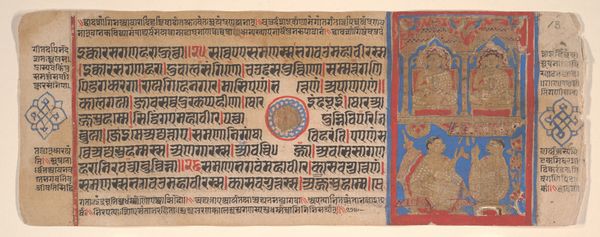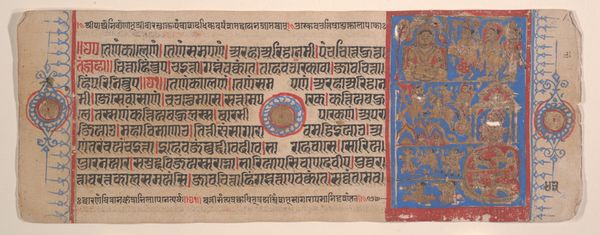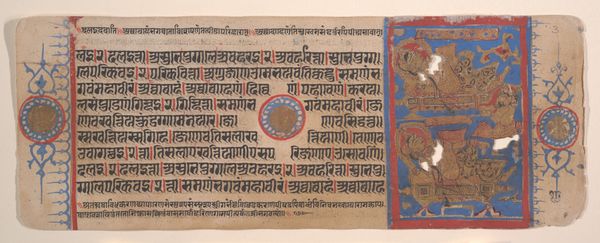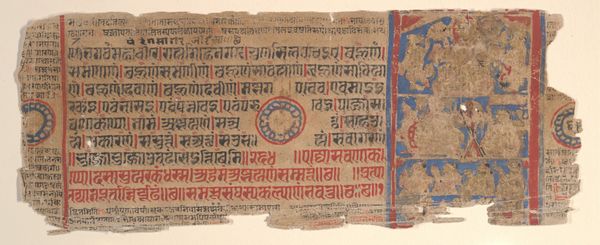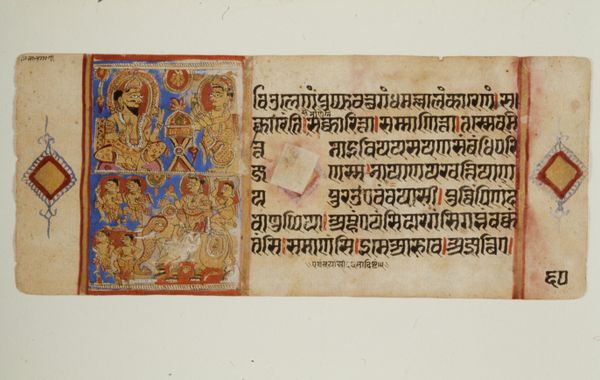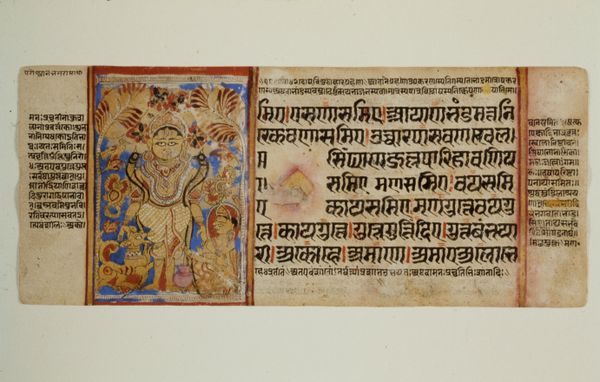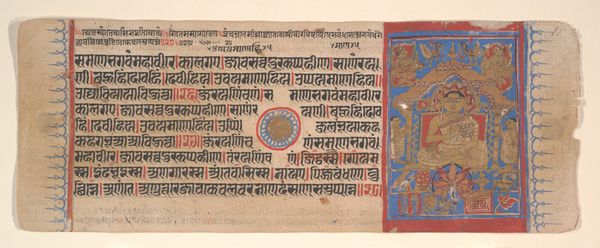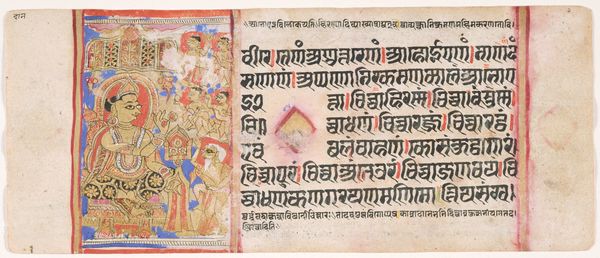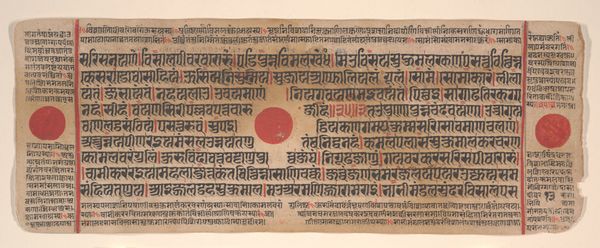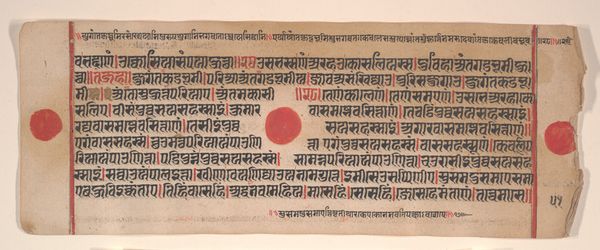
#
pattern heavy
#
natural stone pattern
#
naturalistic pattern
#
geometric pattern
#
abstract pattern
#
organic pattern
#
vertical pattern
#
pattern repetition
#
layered pattern
#
funky pattern
Dimensions: 4 1/2 x 10 3/4 in. (11.43 x 27.31 cm)
Copyright: Public Domain
This small painting of Queen Trisala on her couch was made by an unknown artist, likely in India, using opaque watercolor on paper. The smooth surface of the paper has allowed for a careful and detailed execution. Notice how the artist skillfully employed line and color, and has rendered the Queen's figure with precision, but also with a degree of stylization characteristic of Indian painting traditions. The vibrant reds and blues create a visually arresting composition. Consider the time and dedication required to produce such a work. The preparation of the paper, the mixing of pigments, and the careful brushwork all speak to a tradition of skilled craftsmanship, where artistic expression and technical expertise are intertwined. The artist's labor is embedded in every brushstroke, in every carefully placed detail. The painting is not just an image, it is a testament to the enduring power of making, and the ways in which art can reflect the world around us.
Comments
minneapolisinstituteofart almost 2 years ago
⋮
Growing contacts between northern Indian and the Islamic cultures of Mamluk Egypt and Timurid Persia transformed Jain manuscript painting during the fifteenth century. Paper, introduced from Persia in the twelfth century, gained popularity and by 1350 had replaced palm leaves as the preferred ground for Jain album painting. The importation of illustrated Islamic manuscripts, decorative book bindings, and luxury carpets enriched the visual vocabulary of the Indian subcontinent. The more generous paper format permitted artists to develop ornamental border decorations like those seen here. Continuous-knot designs, the deep crimson ground, and floral medallions are further indications of Persian influence on Jain manuscript illumination.
Join the conversation
Join millions of artists and users on Artera today and experience the ultimate creative platform.
